Copy with no original
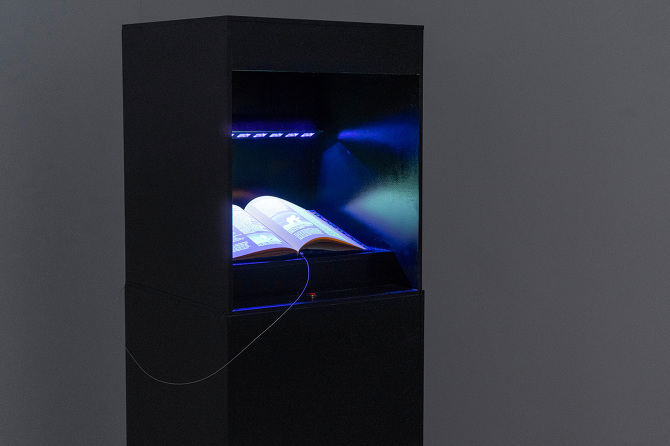
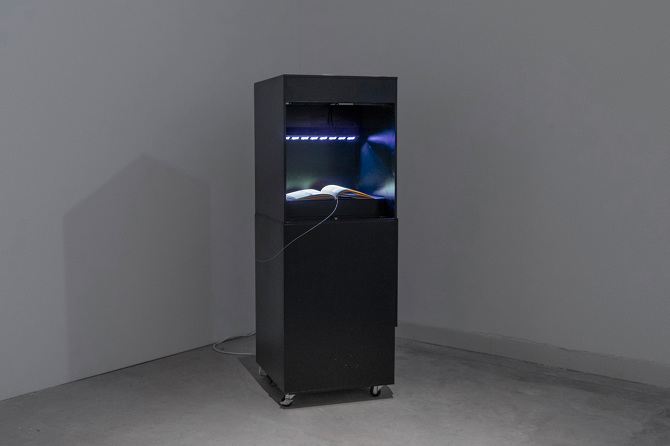

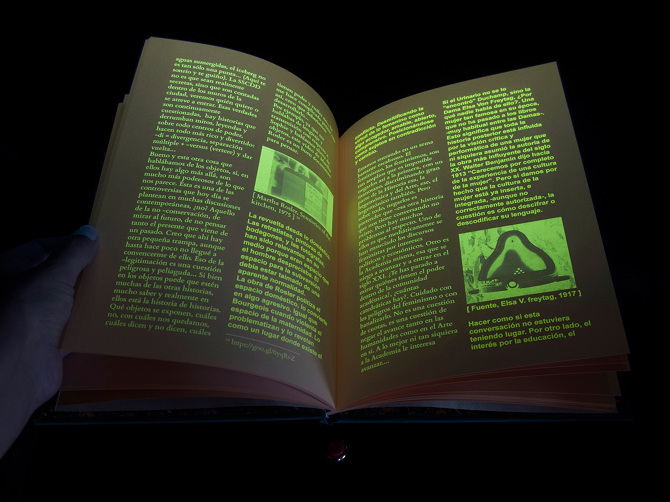


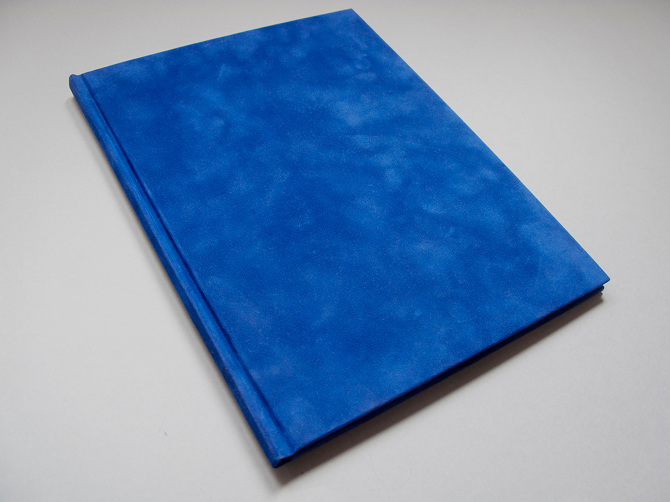 Copy with no original and Thinking the other book. Installation. Wood, Laser printer, camera, arduino, UV lamp, invisible book (thinking the other) and paper. Size: 1,50cmx60cmx60cm,
Coco Moya. (2017)
Copy with no original and Thinking the other book. Installation. Wood, Laser printer, camera, arduino, UV lamp, invisible book (thinking the other) and paper. Size: 1,50cmx60cmx60cm,
Coco Moya. (2017)Circuitos Prize Exhibition.
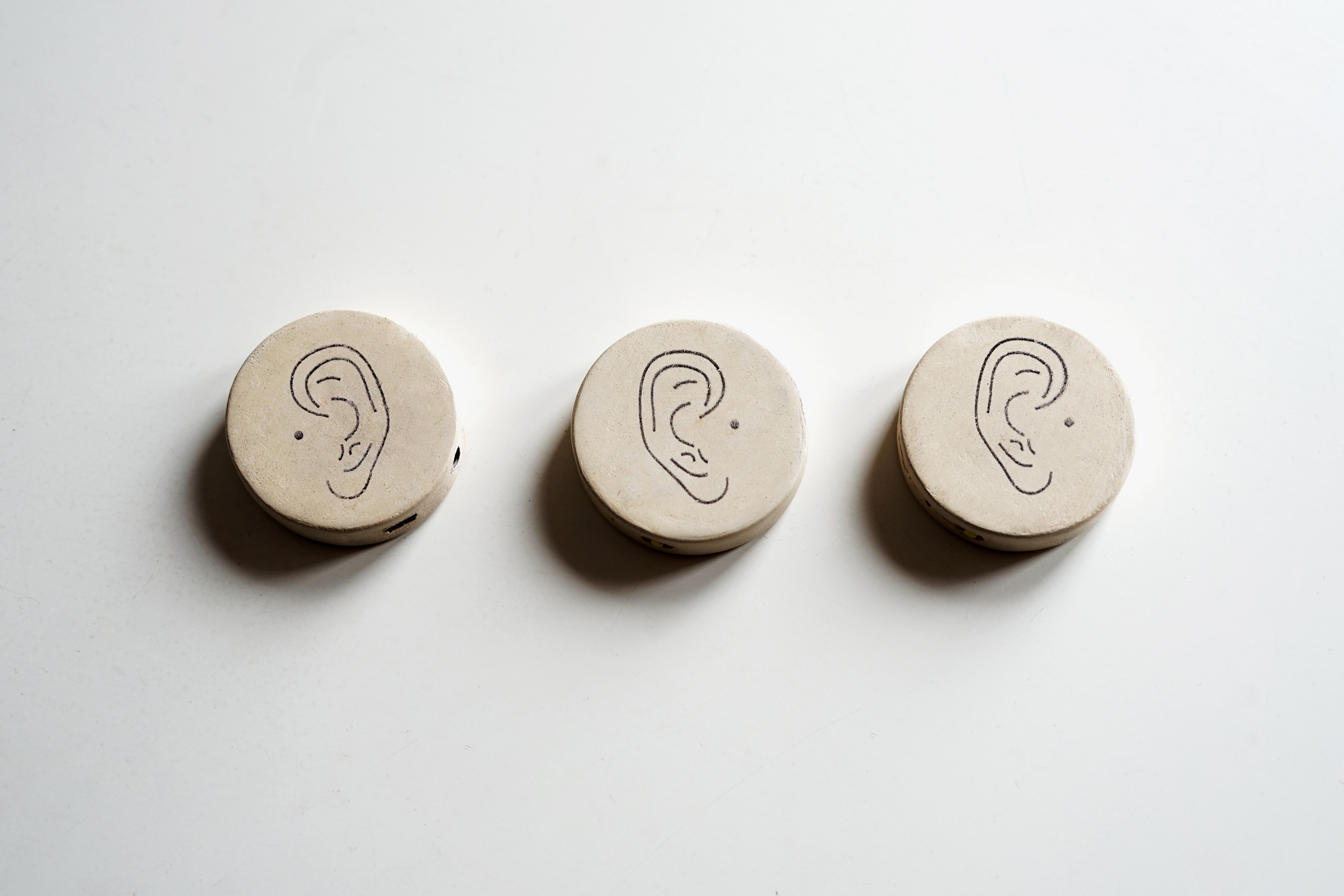
Invisible ink is used in some publications to prevent photocopying. To the naked eye the ink is not visible, however when trying to make a copy, the watermark prevents it from being read. In this case, we reverse the process, and the text is written in invisible ink. When we see the book, touch it and open it, we see only blank pages. But when making a copy we can see the text on the new paper.
A book that exists only if it is copied, only if someone wants to take it away.
The content of the book forms a reflection on the oral transmission of another story, the story of erased women, and how to tell it, through the perspective of society itself.
Reflecting on invisibility and collective transmission as acts of resistance and existence.
︎ Extract from the curator Carlos González Mayordomo:
“Thinking the other is presented as an epistolary essay built from the artist's conversations with agents of the Secret Society. Upon opening it, the scopic disappointment responds to our curiosity through some bleak blank pages; but if we use the photocopying machine that Moya has left at our disposal, the replica converts the invisible ink into a legible text.
This activation of the content transforms the original into a supposition and the copy into a witness to a possibility that oscillates between the real, the fictitious, the possible and the plausible. Because, as the artist has pointed out, paraphrasing Hakim Bey: «It is not a question here of knowing whether or not there is a secret society, but that the thesis starts from the fact that it has already been created, is being created, and will continue to be created while we're here talking." The Secret Society does not have spectators, but participants. His memory is transmitted through people while objects serve only as information conduits.
The ladies that make up this society remain hidden because they know that the issue of visibility requires something more than presence or quotas; It requires, above all, a profound intervention in ideological, social and cultural discourses, so that the multiplicities and singularities are not reduced to a simple process of tolerable integration according to the parameters set by the hegemonic identities.”

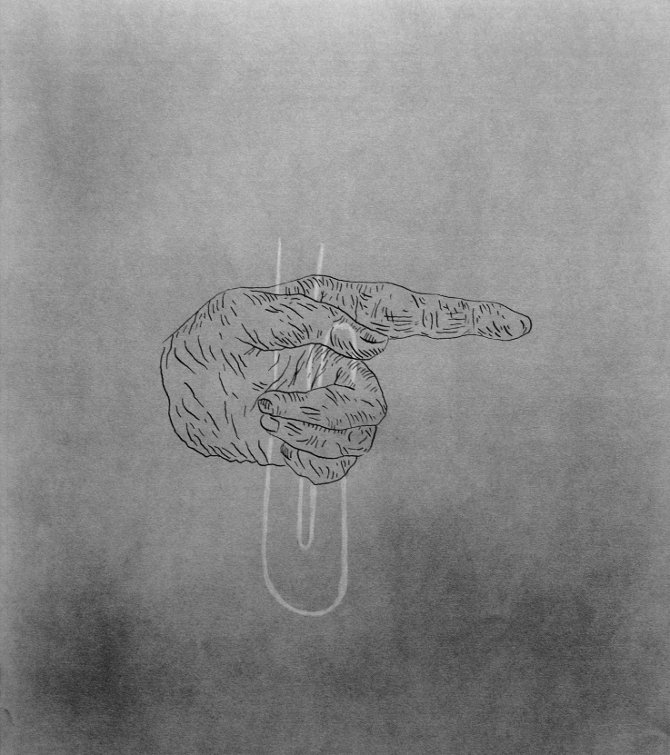

In this series of drawings, the rope and its manipulation are shown as if it were a magic manual, where the steps to perform a trick that consists of cutting a rope and restoring it magically, rehabilitating its bond are explained. However, in this sequence the magician's secret is not revealed, but remains latent in the drawings, which appear as a cryptic language only understandable to those initiated into the secret. It is inspired by the fanzines that magicians sold at the end of their performances, revealing some of their tricks with little visual instructions like this one. The Latin title refers to what Giordano Bruno considers to be precisely magic, the ability to make and break bonds at will. Consider love as the bond of bonds above all: the vinculum vinculorum.